By its history, Northern Macedonia is a land rich in legends and exceptional places. This state, free since the outbreak of Yugoslavia, deserves a stay, both its landscapes, its cities and its monuments are wonderful.
If we have all heard of North Macedonia (the country that changed its name in 2018), few people have visited this great state like the former Poitou-Charentes region.
Yet, this Balkan republic surprises all those who have decided to go there. It must be said that the arguments in favour of this former Yugoslavia region are not missing. Indeed, North Macedonia has breathtaking landscapes, thanks to its various reliefs. Here, lakes and mountains fill the landscape.
History is not in fact, since Alexander the Great, the Roman Empire, Byzance and the communist era all had their hands on these lands. North Macedonia has everything to marvel at you. And that is why Wanderlix invites you to dive into the heart of this unknown territory.
Skopje, gateway to the country
Your stay starts in Skopje, the capital and gateway to foreign tourists. The communist past of the country has barely arrived. Its architecture is strongly influenced by the period, to the point of making Skopje the most beautiful testimony of brutalist art. An unhappy feature, since it was due to the earthquake that hit the city in 1963, which ravaged no less than 80% of the Skopiote territory.
With more than 1,000 dead, 3,000 wounded and 120,000 new homeless, the city will be rebuilt in an emergency, without plan or artistic will. Skopje is not the most beautiful of the cities.
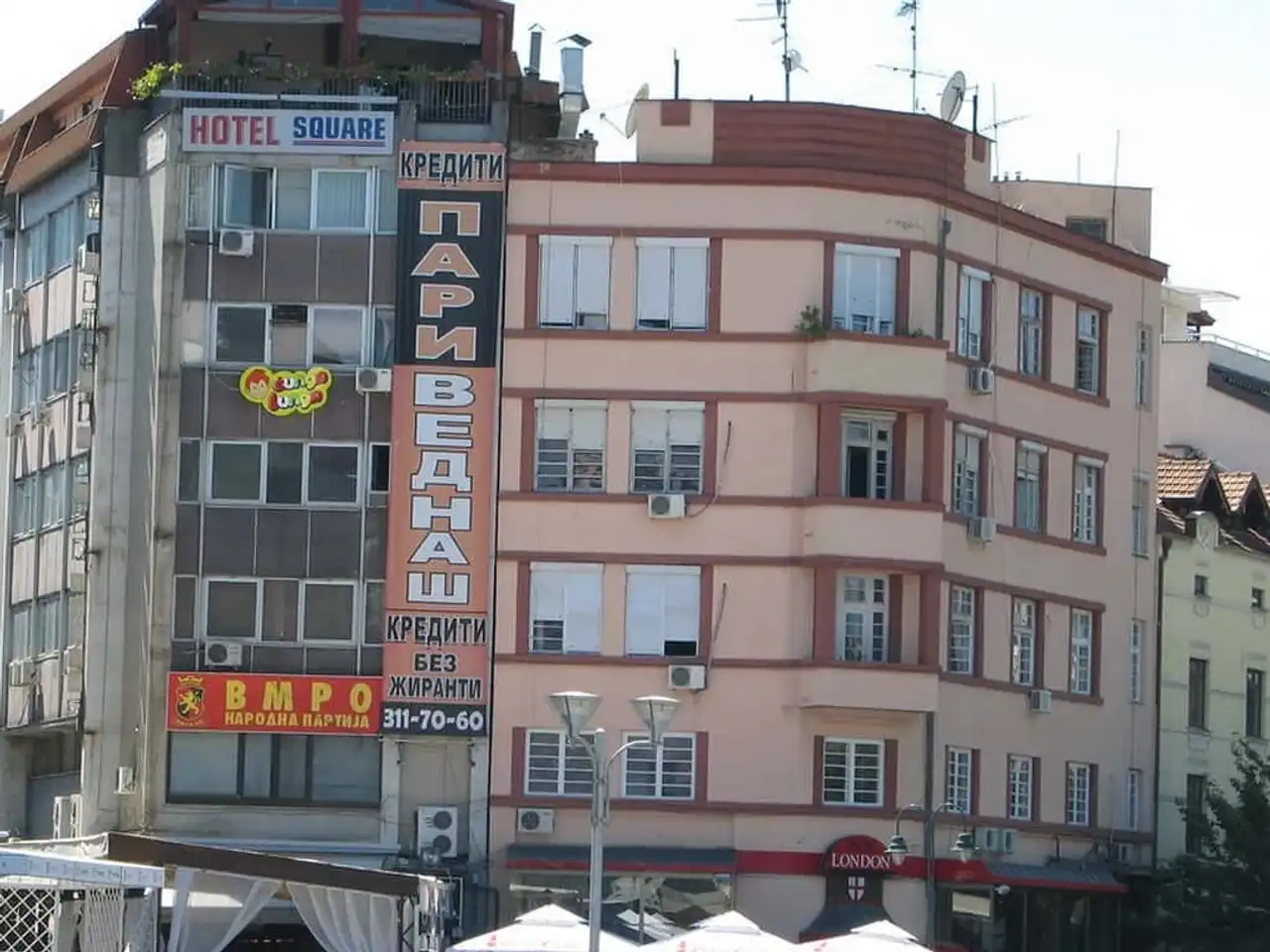
Example of skopiote brutalist art – Photo credit: Flickr – David Bailey
Another consequence of the earthquake, the 80% of the destroyed territory also saw testimonies of the past fly away. Only a few places and monuments survived, such as the Stone Bridge, the Old Bazar or the Acqueduc, which gives them an invaluable symbolic value.
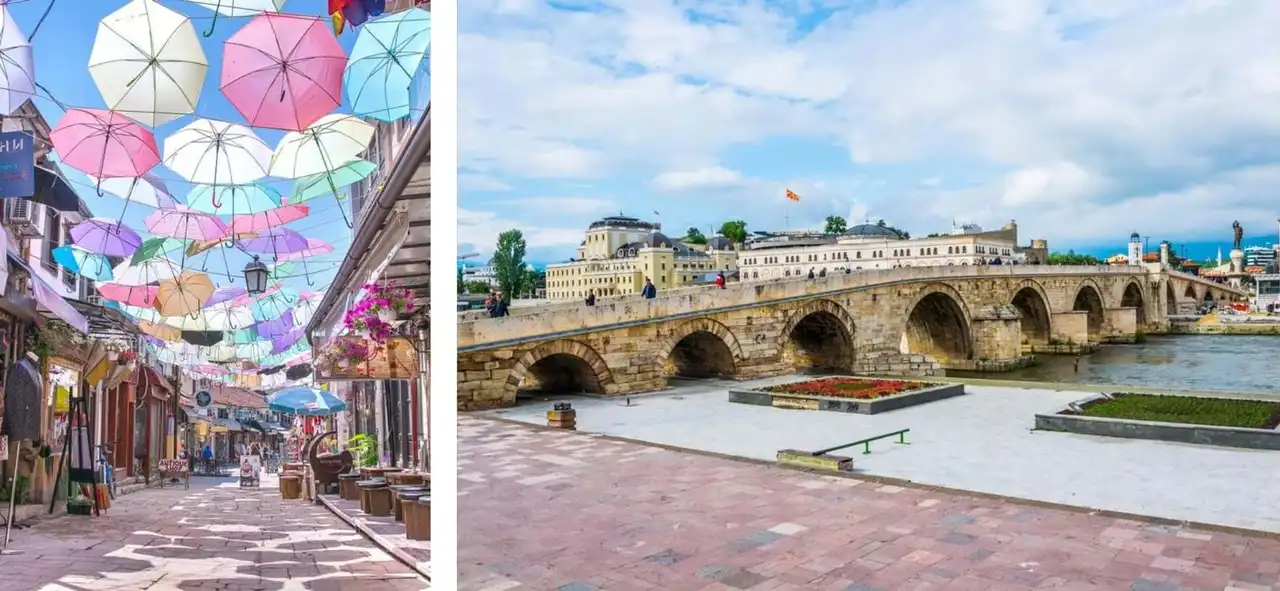
Find Left: Le Vieux Bazar On the Right: Le pont de pierre Photo credit: Shutterstock – mastapiece trabantos
But today, Skopje has digested this tragic event and looks forward. From now on, the capital wants to be fresh, thanks to a modernization of infrastructure. Four examples of this modernization have become essential.
The first place is none other than the Place de Macedonia, the largest in the city. If its 18 000m2 impress, the real interest of the place is to discover the statue of Alexander the Great, who reigned over Ancient Macedonia in the first century before our era. The second is the exceptional Saint-Clément Cathedral of Ohrid, built on a rotunda base.
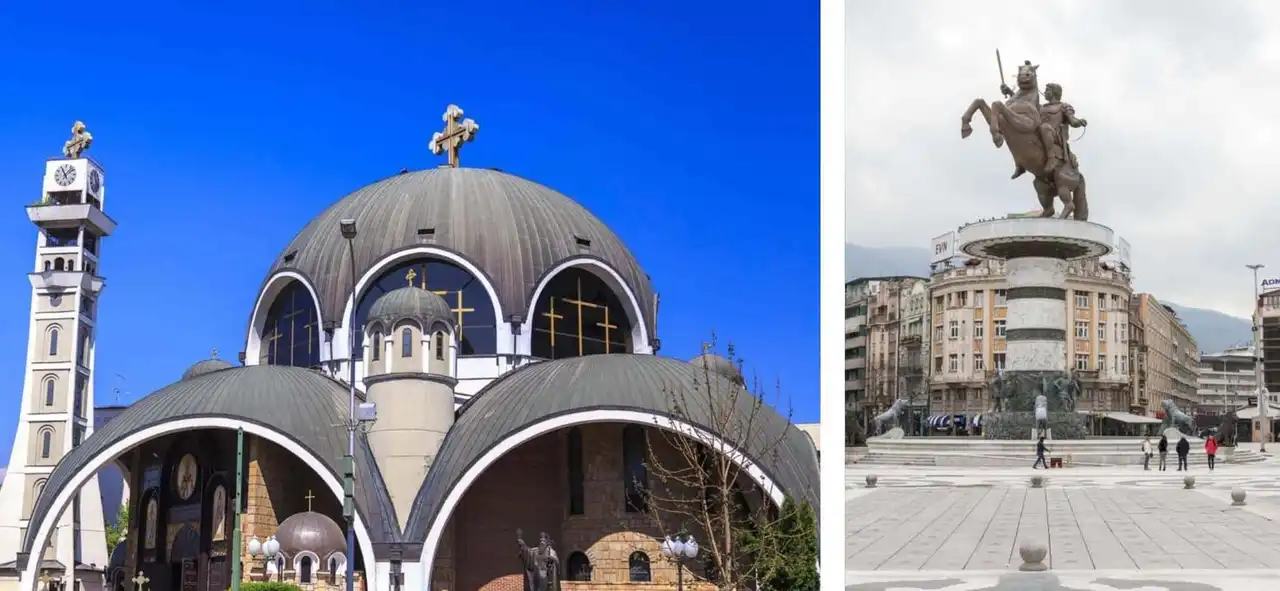
Find On the left: Ohrid Saint-Clément Cathedral The statue of Alexander the Great on the Place of Macedonia Photo credit: Shutterstock – ColorMaker
By continuing your path, you will discover the Pont des Civilisations, on which you will be able to admire 37 statues, which represent the greatest characters in the history of North Macedonia. Prove that the city seeks to highlight its past, proving that the capital has everything to be a tourist destination of choice.
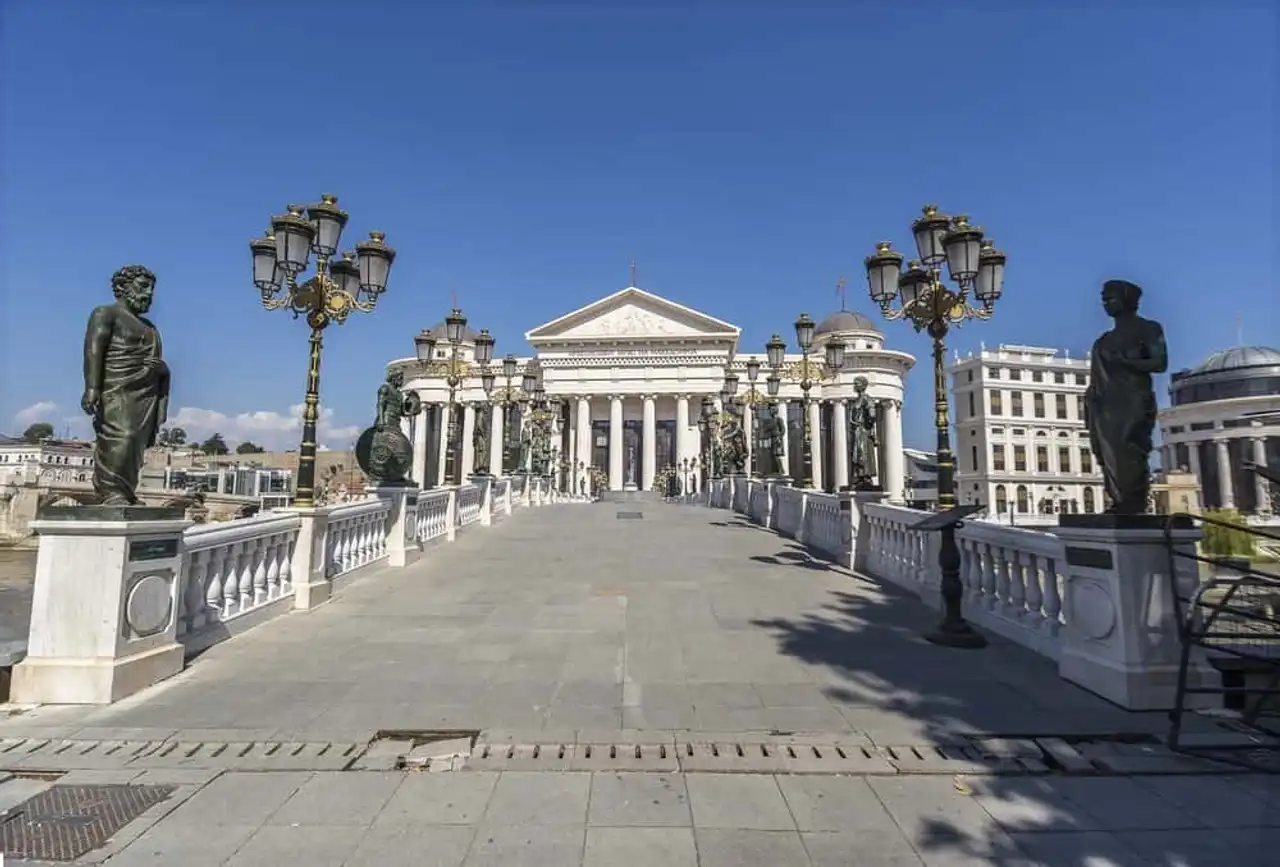
Photo credit: Shutterstock – nikolay100
Finally, your walk in the footsteps of the new Skopje ends at the Memorial dedicated to Mother Teresa. From the Albanian minority, Mother Teresa is the most emblematic contemporary character in the country. His native country had to pay tribute to him, transforming the church of his baptism into a memorial dedicated to his work. A striking visit, plunging us into the heart of the life of the Nobel Peace Prize 1979.
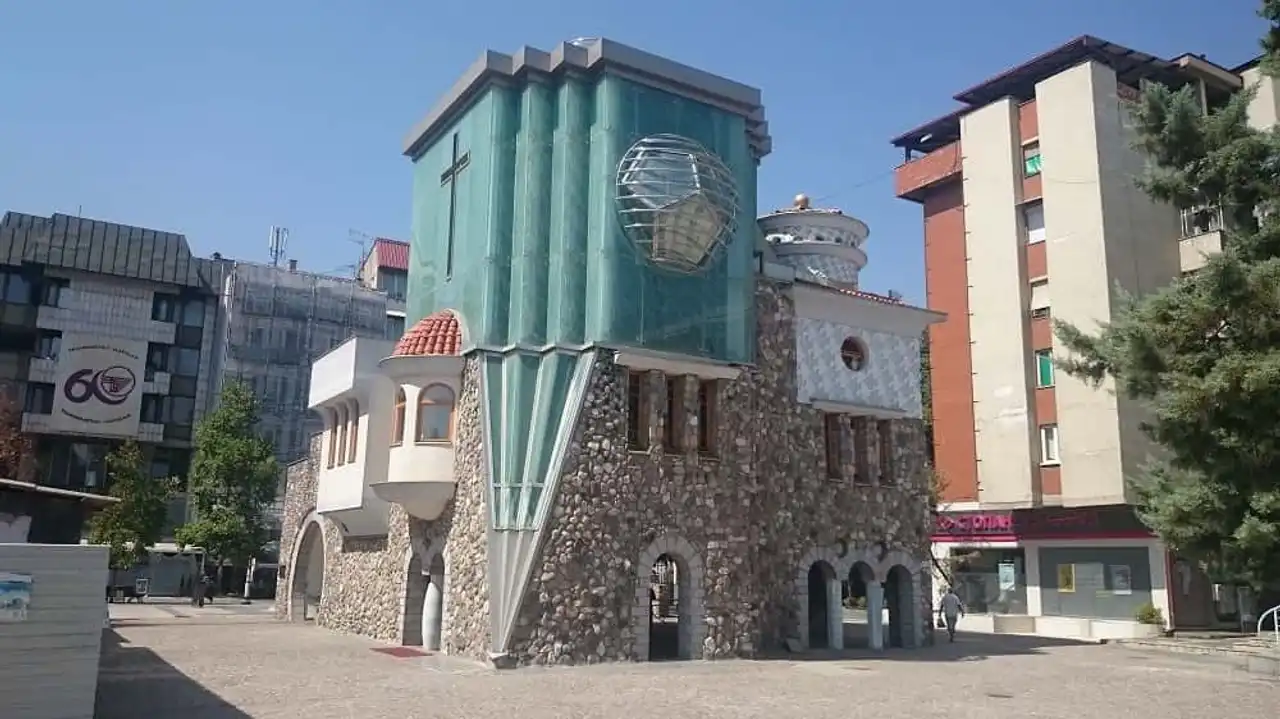
Photo credit: Wikipédia – Raso
Nevertheless, this desire for modernity is not a success at all. Increasingly, large buildings are emerging throughout the city, sometimes even stuck to the last vestiges of the past. This contrast is not without consequences, since the rare testimonies of the past sometimes go unnoticed, while they are indeed the ones who make Skopje’s singularity.
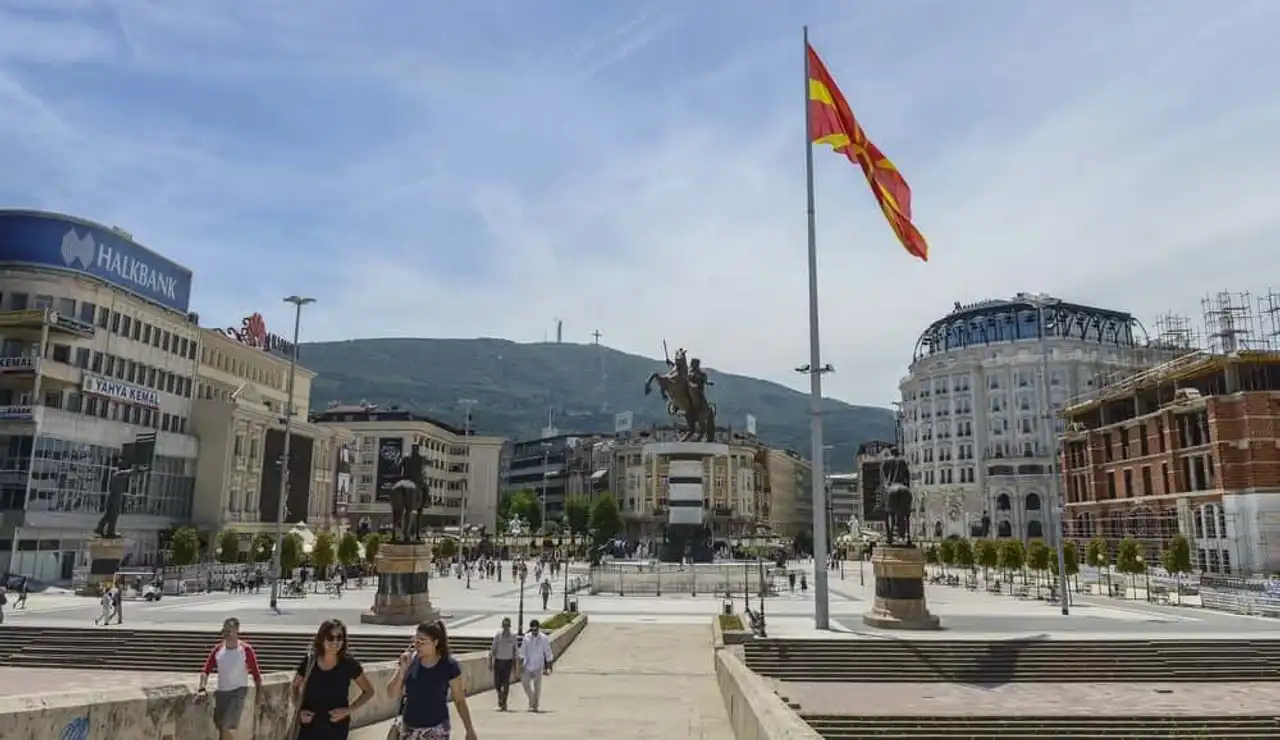
Here, the statue Alexander the Great is dominated by banking and hotel buildings – Photo credit: Shutterstock – Bobica10
But to finish on a positive touch, and before going to new horizons, get out of the metropolis and get high. The goal? Gravir the Mount Vodno, which dominates the Skopje, and whose highest point (the Pic Krstovar) points at 1,066 meters above sea level. Once the summit reaches, the show is fabulous.
The view is of the most beautiful effect, especially at night, where only the city illuminates. Finally, since behind you, you will obviously not have missed the Millennium Cross, the highest cross in the world. If the cross necessarily attracts curious tourists, it is not its primary purpose. It shows above all the strong link between North Macedonia and the Orthodox Church, a majority of which is 67%.
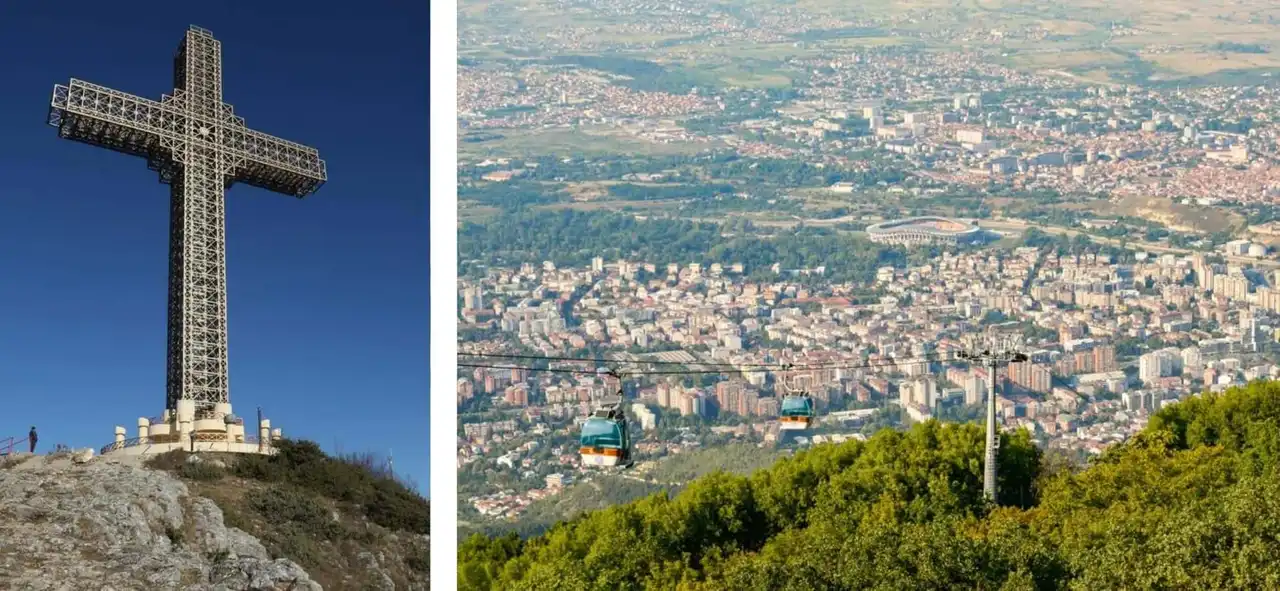
Find on the left: the Millennium Cross on the right: the panorama from Mount Vodno Photo credit: Shutterstock – mastapiece trabantos
The place, beautiful and symbolic, will mark the end of your visit to Skopje, a city that is unknown but which seduces each of its visitors.
Vélès and Bitola, the cities mirror
If Skopje is a charming step, it remains insufficient to fully understand the history of North Macedonia. To better understand this particular state, you have to continue your way further south, in two cities called “mirrors”, as they perfectly reflect national culture, history and traditions.
It is in Vélès that the discovery continues, where a few minutes are sufficient to realize that one enters a more authentic North Macedonia. In particular, it is noted in the old-city architecture, which is quite different than in Skopje.
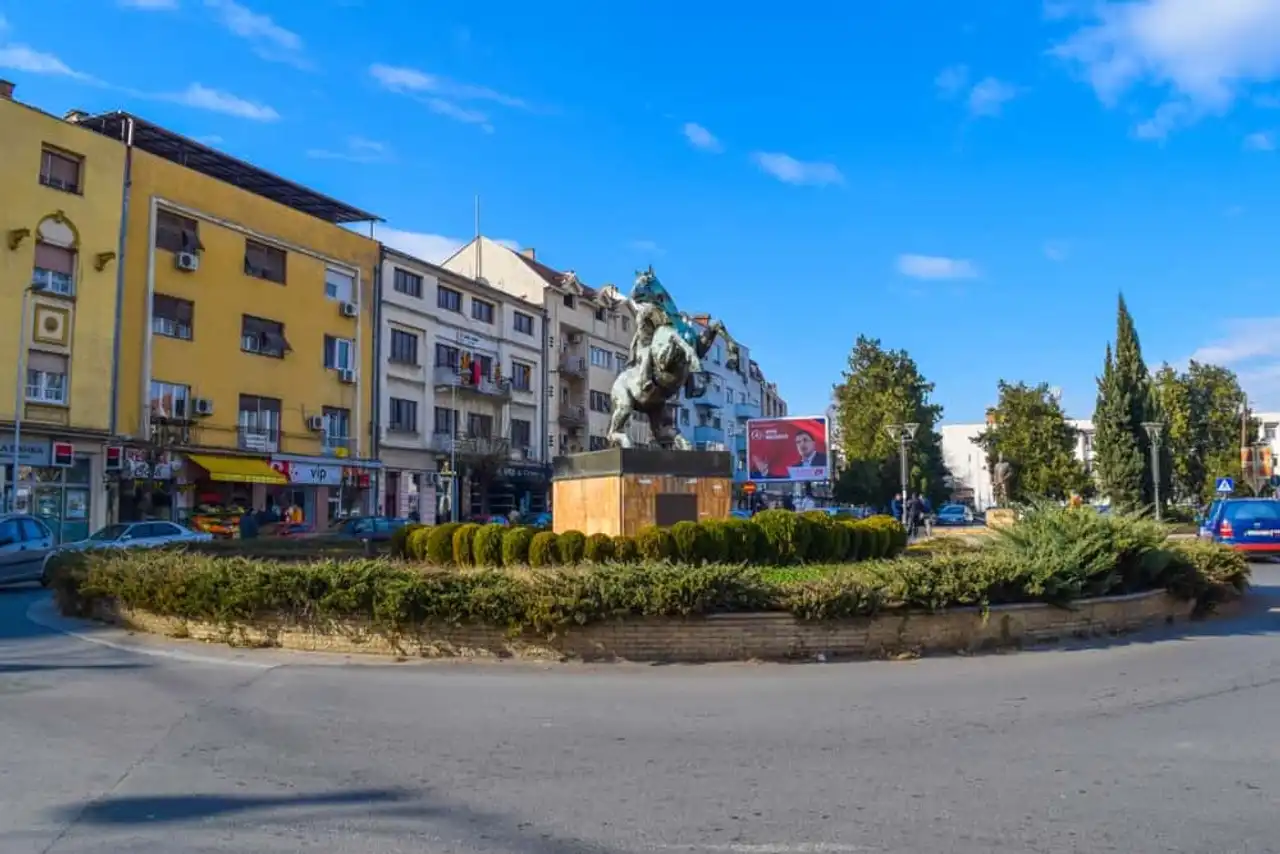
Photo credit: Shutterstock – Authentic travel
It is also impossible to escape from the communist period, which made Vélès a leading industrial city, and whose factories still operate. This past, Vélès has long paid for it, since its industrial status has long caused compatriots and foreigners to flee. Even today, the city is renowned for the poor air quality, making Vélès one of Europe’s most polluted cities.
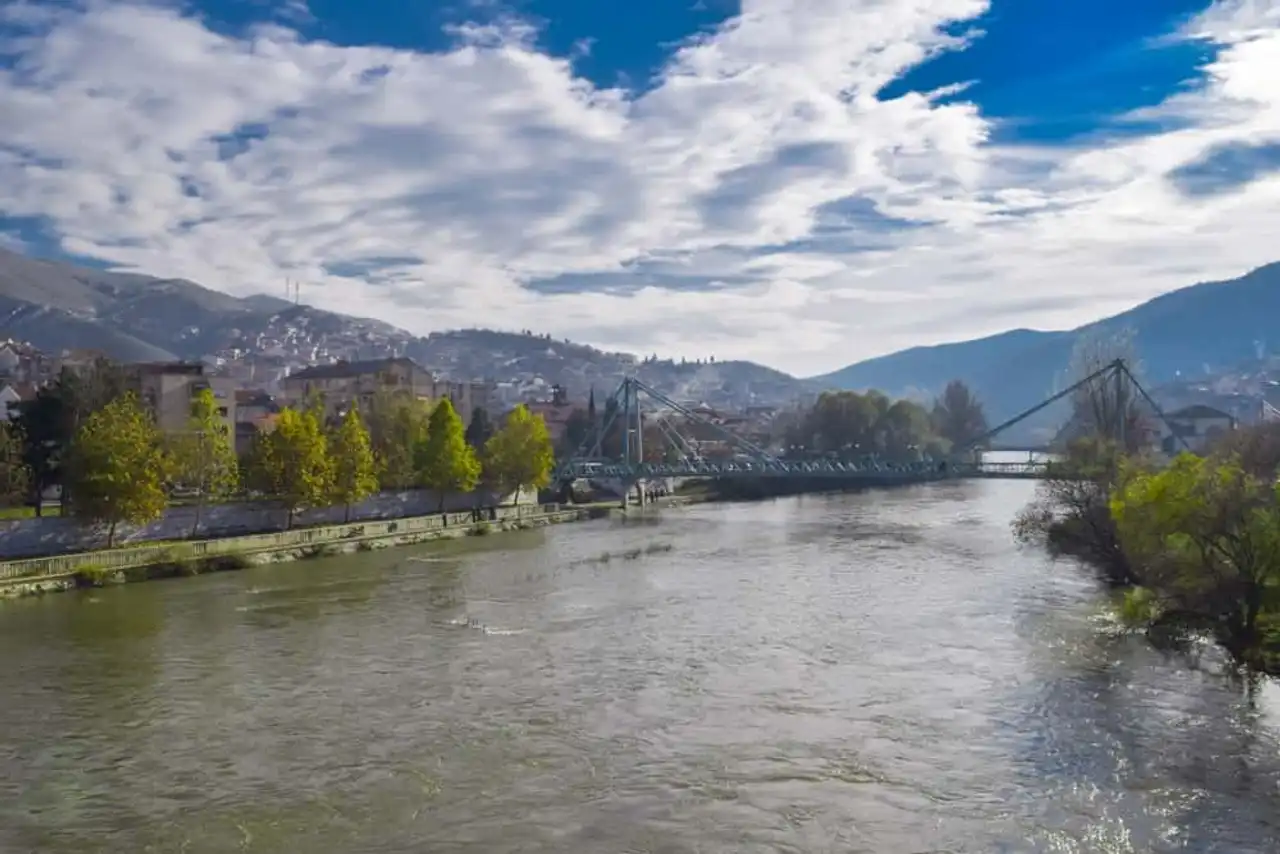
The Vardar, which separates Vélès in two – Photo credit: Shutterstock – Authentic travel
Yet, not visiting Vélès would be a mistake. Even more for lovers of literature, since Vélès is none other than the birthplace of Kotcho Ratsin, considered the founder of North Macedonia. A detail that makes the pride of the premises, which kept to maintain its heritage. It is in this dynamic that the "Rratsin Meetings" was created, the main Balkan poetry festival.
Finally, if time allows you, take advantage of it to visit its house, which has become a museum dedicated to the life of the poet, which is divided between literature and revolutionary movement.
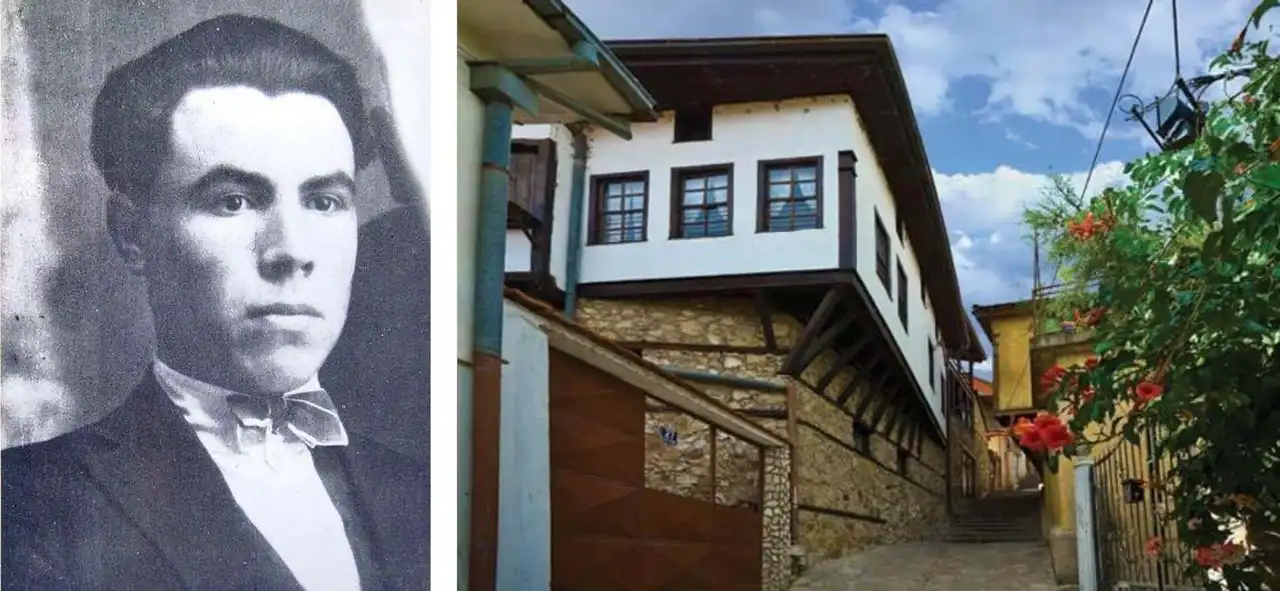
On the left: the portrait of Kotcho Ratsin To the right: Kotcho Ratsin Memorial House – Photo credit: Wikipedia – Skopje Archives Find Facebook – Macedonia Art & Architecture
After discovering Vélès, take the direction of another authentic city: Bitola. Despite a population of 74,000, you are in the second largest city in the country. As soon as you arrive, a certain serenity is released. Its pedestrian streets, small squares filled with cafés, and its pretty fountains create a peaceful atmosphere.
Moreover, this tranquility can increase by leaving a little of the city. For this, take your most beautiful hiking shoes and lose yourself in the lush nature of Pelister National Park. You will discover a sumptuous panorama, composed of Macedonian pines, small lakes, and an unparalleled view of the surrounding plain. This rewards the hardened physical effort.
But before descending, walk a little further to the sublime Lake Prespa, where all the waters of the mountain come together. What to say in front of such a natural show, where mountains and turquoise waters are enough to marvel at you.
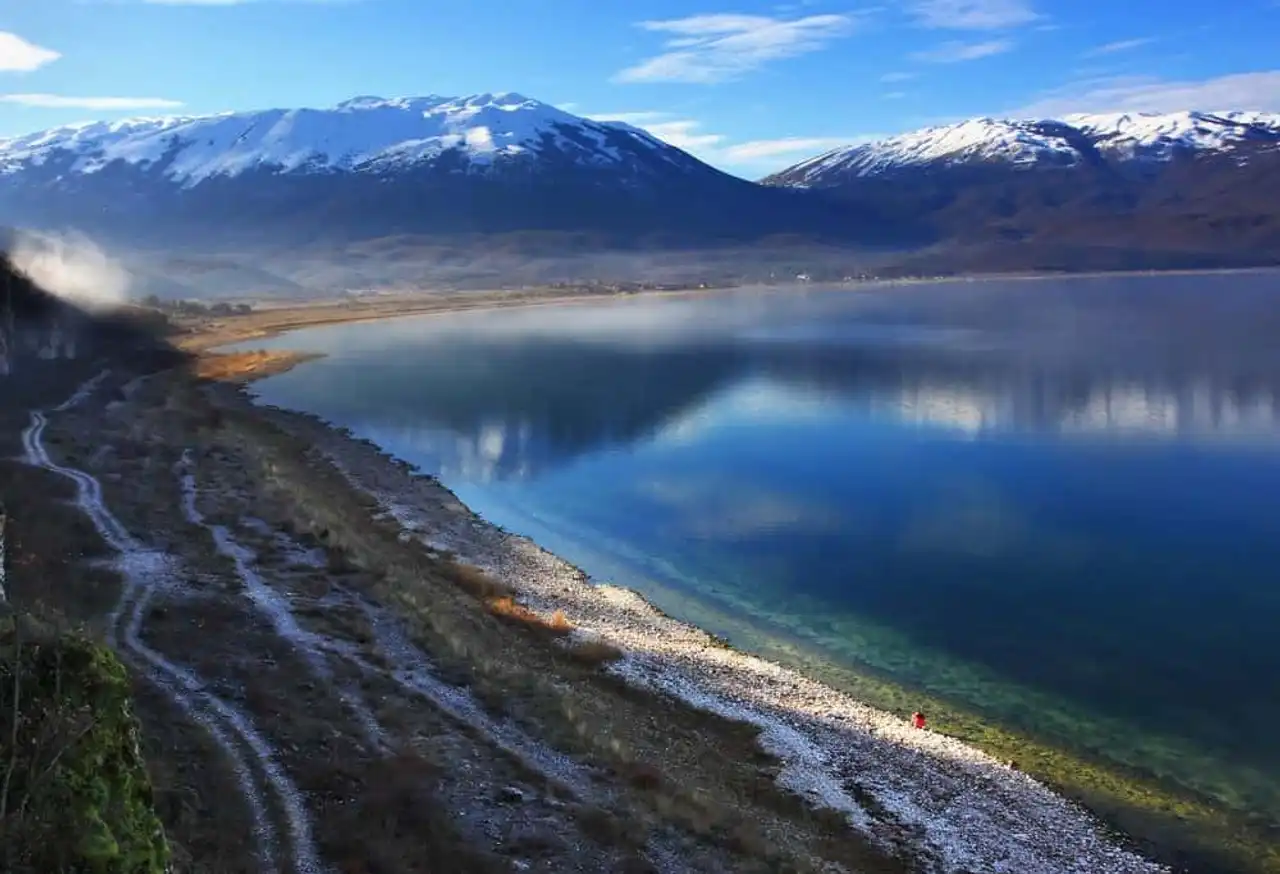
Photo credit: Shutterstock – Goran Kuzmanovski
After this small detour outside the city, your return to Bitola lets note that here too, culture plays a central role. For example, it is very likely that during your visit, a festival will be organized. In the opposite case, the pretty theater welcomes plays of all kinds.
However, this cultural city status is relatively recent. It was only with the creation of the University of Bitola in 1979 that cultural life took another dimension. The population is now younger and attracts students from all over the Balkan Peninsula.
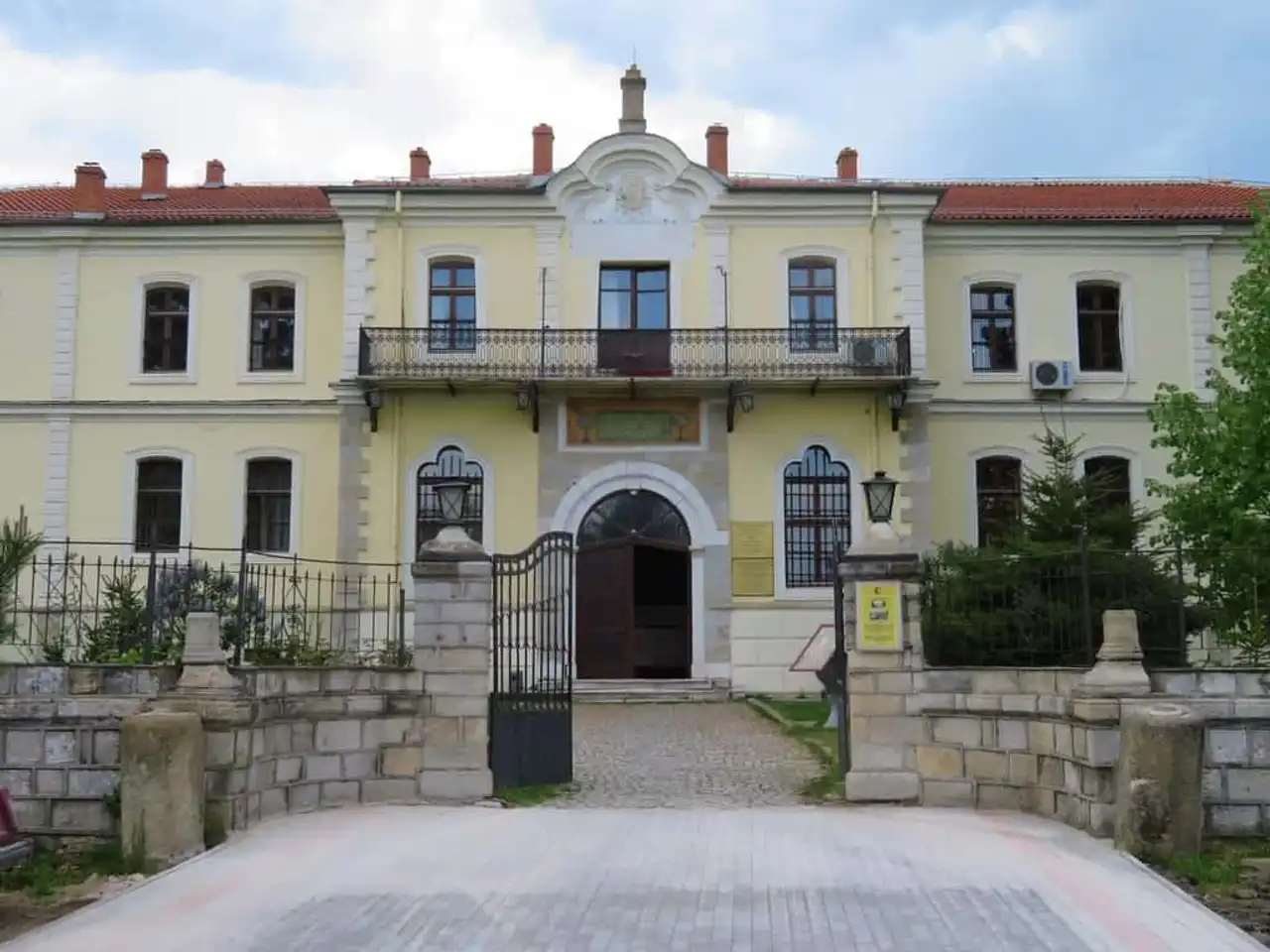
The Bitola Museum – Photo credit: Flickr – Dan
Finally, throughout your walk, the history of North Macedonia is necessarily contaminated. Every neighborhood, building, museum or statue teaches us something.
Its Old Bazar, where the Tower of Horology sits, attests to the influence of the Ottoman kingdom on the construction of the city. The residential buildings, they recall the most historical part of Skopje, dating from the Yugoslav regime. The many churches, synagogues and mosques evoke the cosmopolitan Bitola where Macedonians, Albanians and Turks coexist in serenity, far from the conflicts of ancient times.
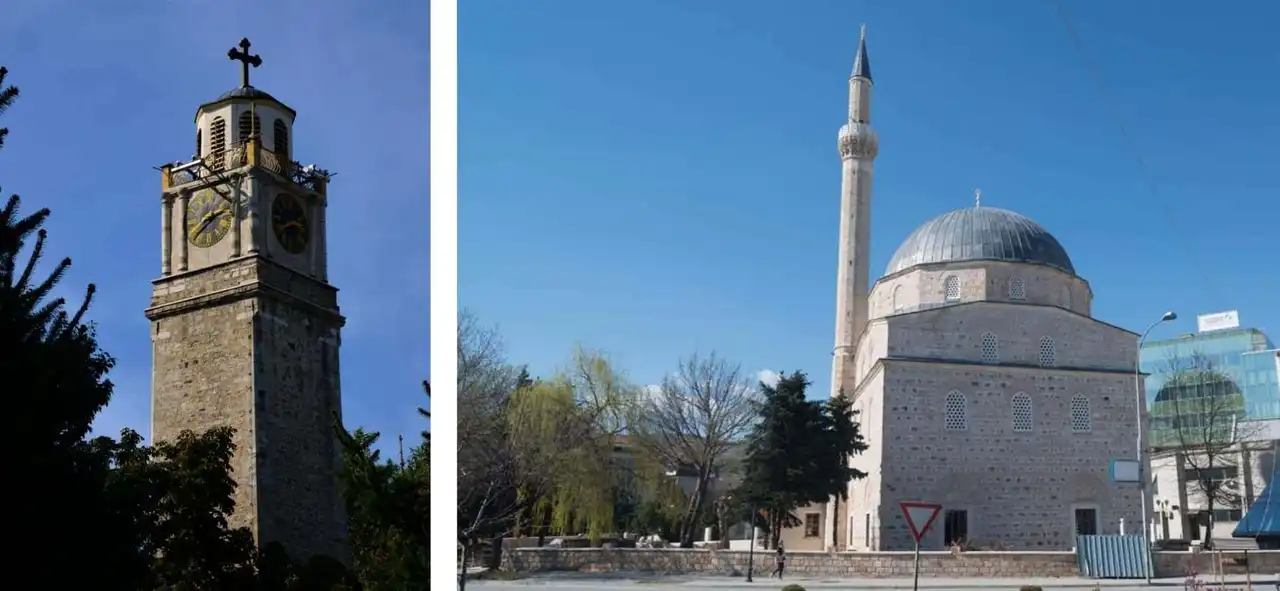
Aerial view of the castle and the historic centre of Lisbon – Photo credits: Shutterstock – alanf
Finally, the ruins of Heraclea allow us to return to the foundations of the city, when Macedonia was only one and undivided, four centuries BC.
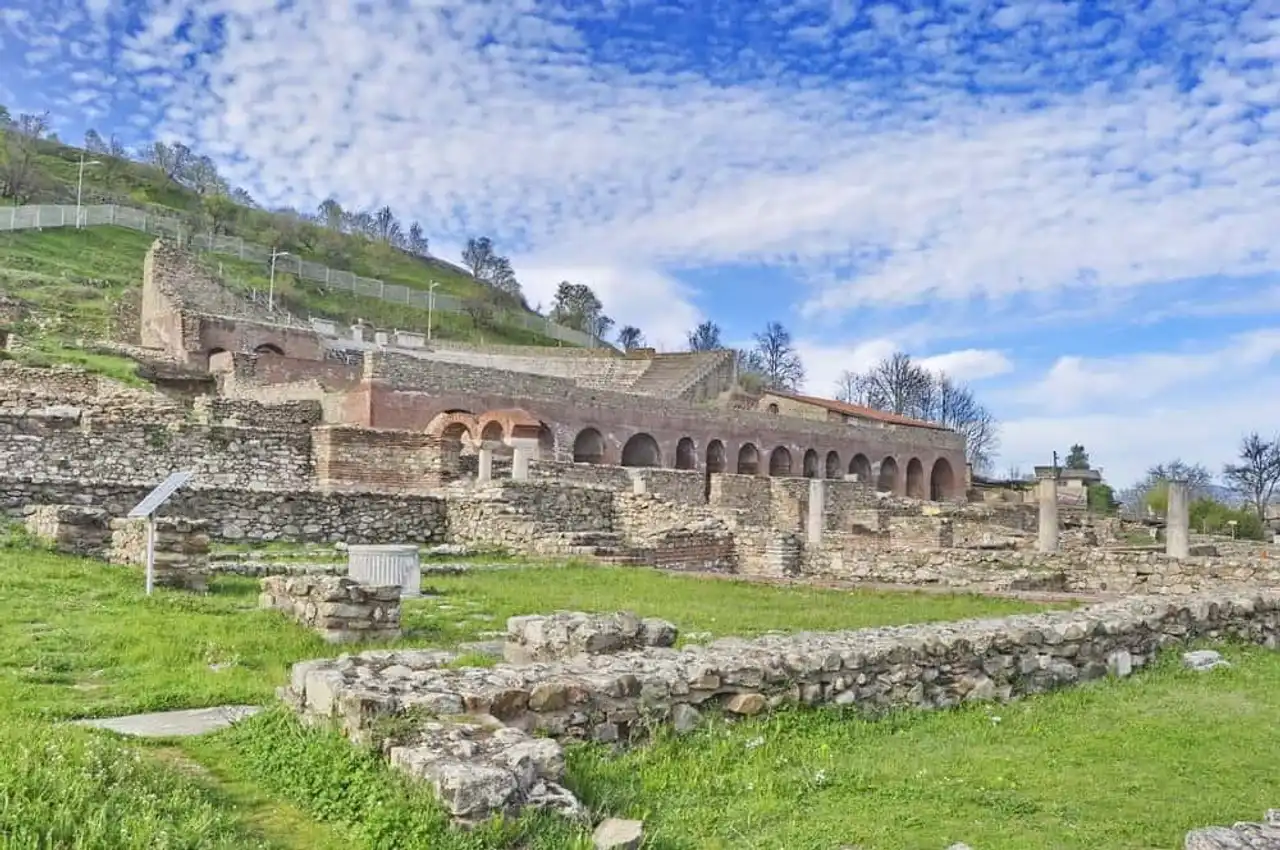
Photo credit: Shutterstock – Nenad Basic
Ohrid: the national and dynamic treasure
To perfectly conclude this discovery of North Macedonia, it would have been impossible not to mention Ohrid, the true treasure of the country. And to take your eyes from the moment you arrive, towards one of the oldest lakes in the world: that of Ohrid. Here you are in front of a gigantic lake, so large (358 km2) it is impossible to see its two ends.
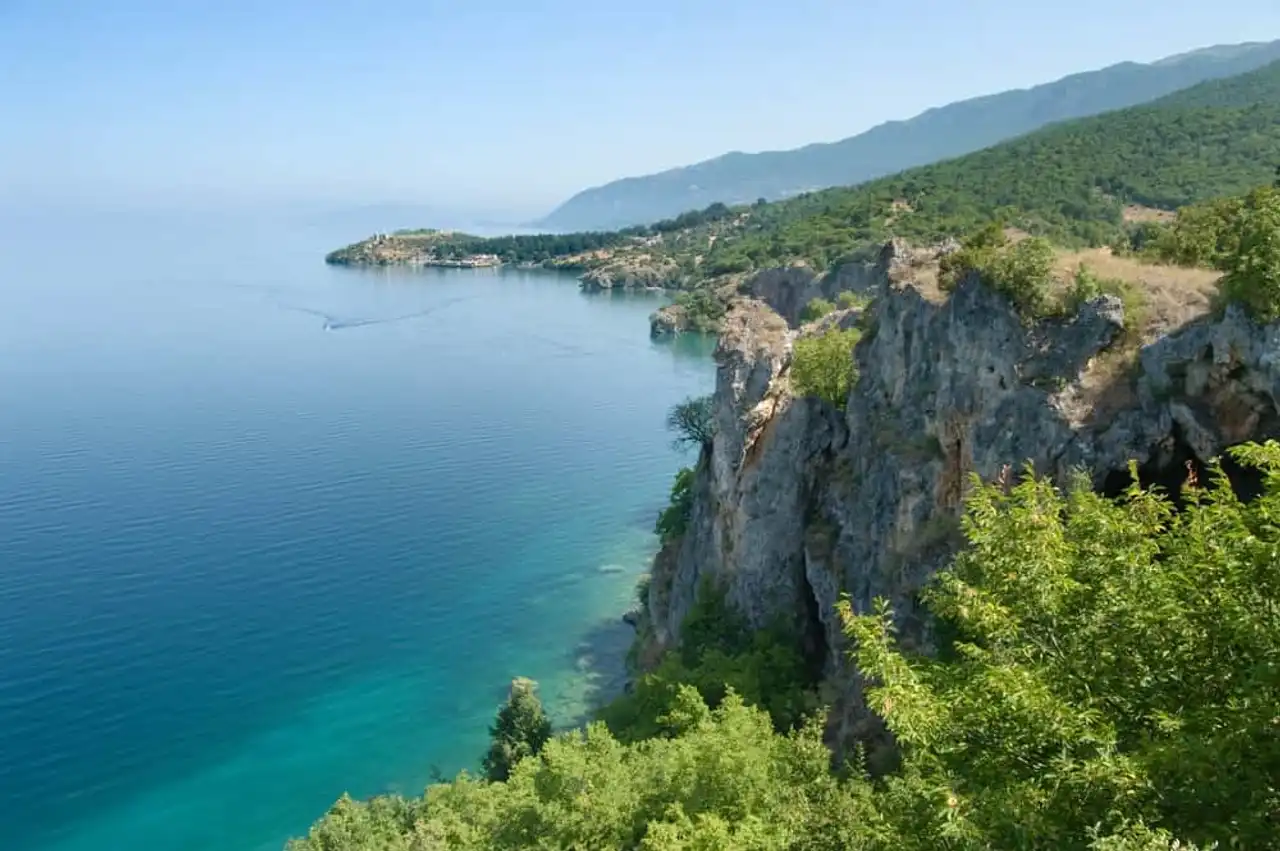
Photo credit: Shutterstock – ollirg
If excursions on the lake exist, you take the risk of killing all the charm, since these activities are practiced by many tourists. Instead, take your hiking shoes and walk around the lake, looking for small wild beaches and unknown corners, where magic will work even more.
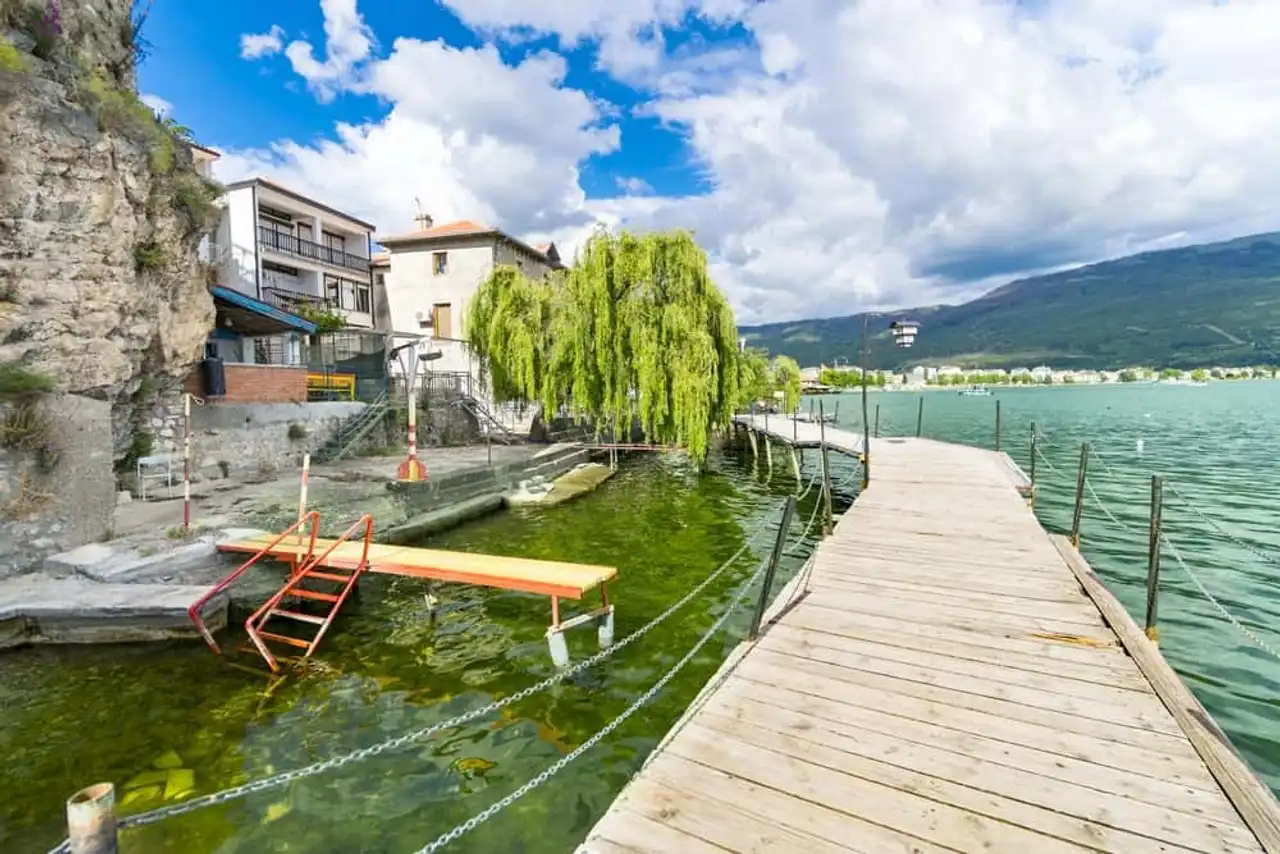
Kaneo district, along Ohrid Lake – Photo credit: Shutterstock – zefart
It is also by making the lake tour that you will discover one of the other specialties of Ohrid, namely its places of worship. The opportunity to discover the picturesque chapel of Saint-Michel, built in the rock.
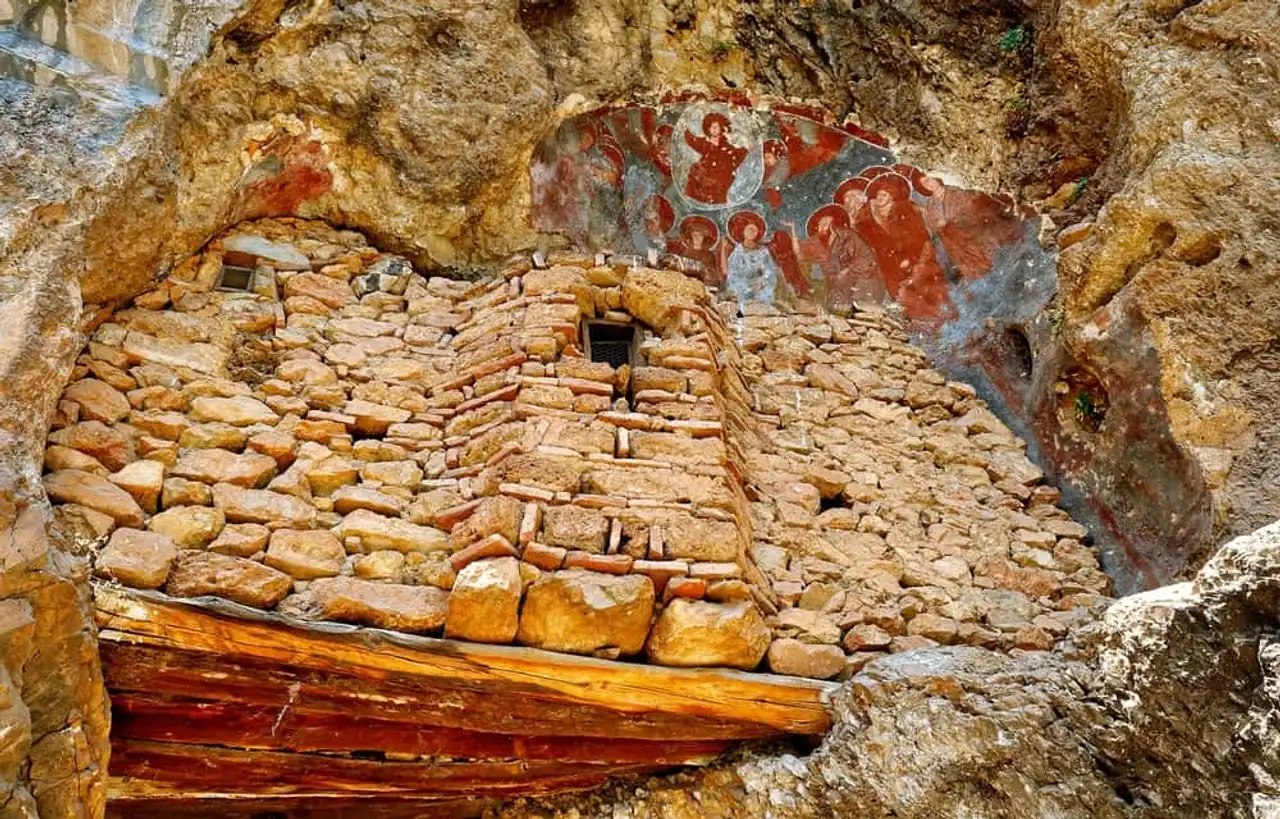
Fresques of the 16th century, engraved in the rock – Photo credit: Shutterstock – Karapancev
Further on, the Saint-Baum and Saint-Pantaleimon monasteries of Ohrid offer you. Their architectures, in Byzantine style, are world-renowned. Inside, the show is just as fantastic, as many golden frescoes await you.
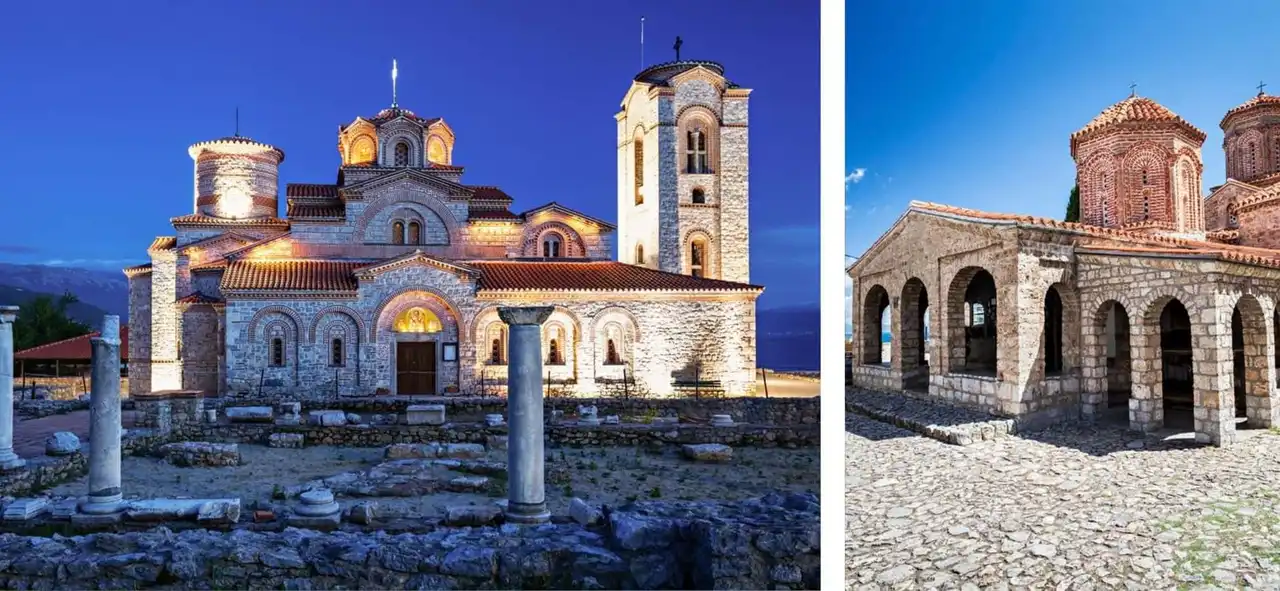
Find on the left: the monastery of Saint Panteleimon on the right: the monastery of Saint-Baum – Photo credits: Shutterstock –
But if one should only remember a spiritual place, and in all of North Macedonia, it would undoubtedly be the church of St. John Kaneo, placed on the cliff. The structure is impressive, the sublime interior. This is the famous fireworks long awaited.
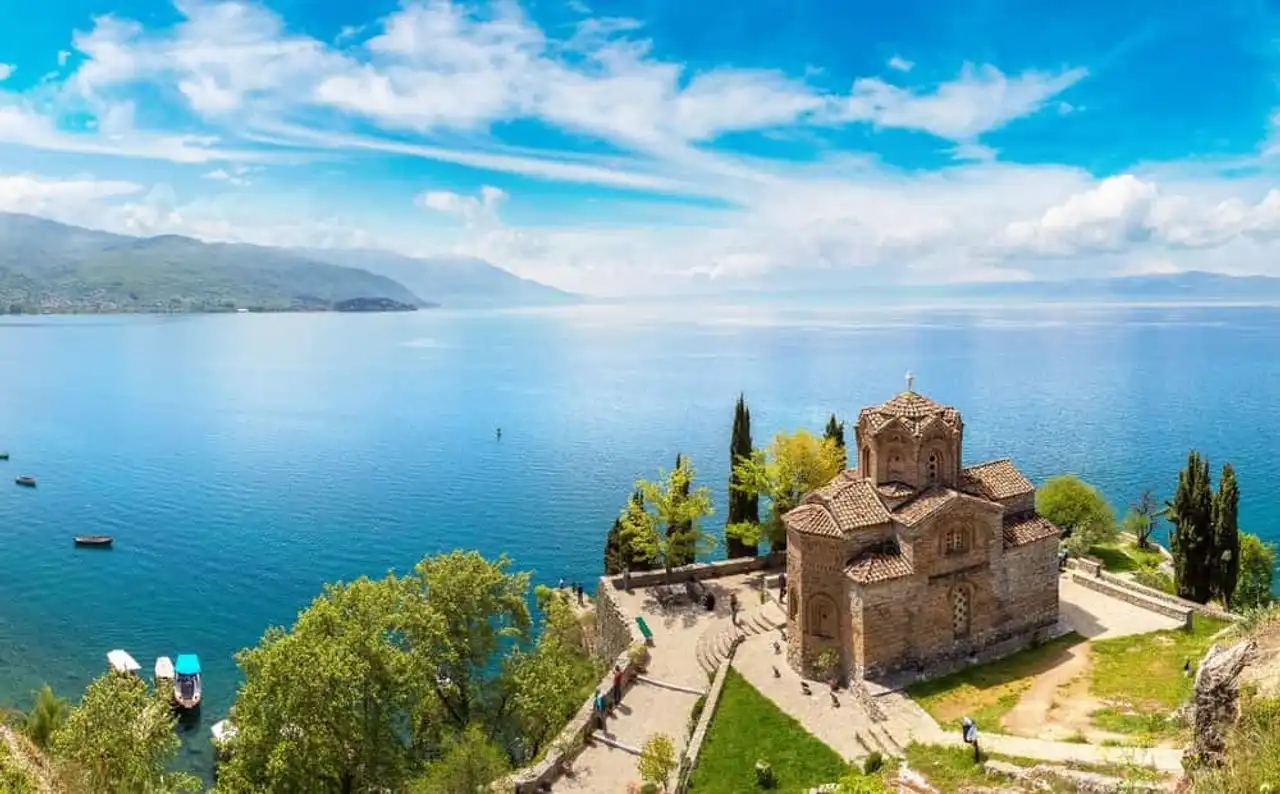
Photo credit: Shutterstock – S-F
But if Lake Ohrid is such a beautiful place, it is also and especially thanks to the surrounding setting. Indeed, all around the water, mountains dominate the waters. Better, on one of the shores, it is simply a national park that dresses the landscape. This is Galitchitsa National Park.
If you have kept your hiking shoes, you have done very well, since a climb is required. The effort provided is not the simplest, but the reward is simply incredible. Once on the roof of the park, it is a panorama of the lake that is offered to you. Take a moment, and enjoy the moment. This kind of moment that reminds you why you like to travel so much.
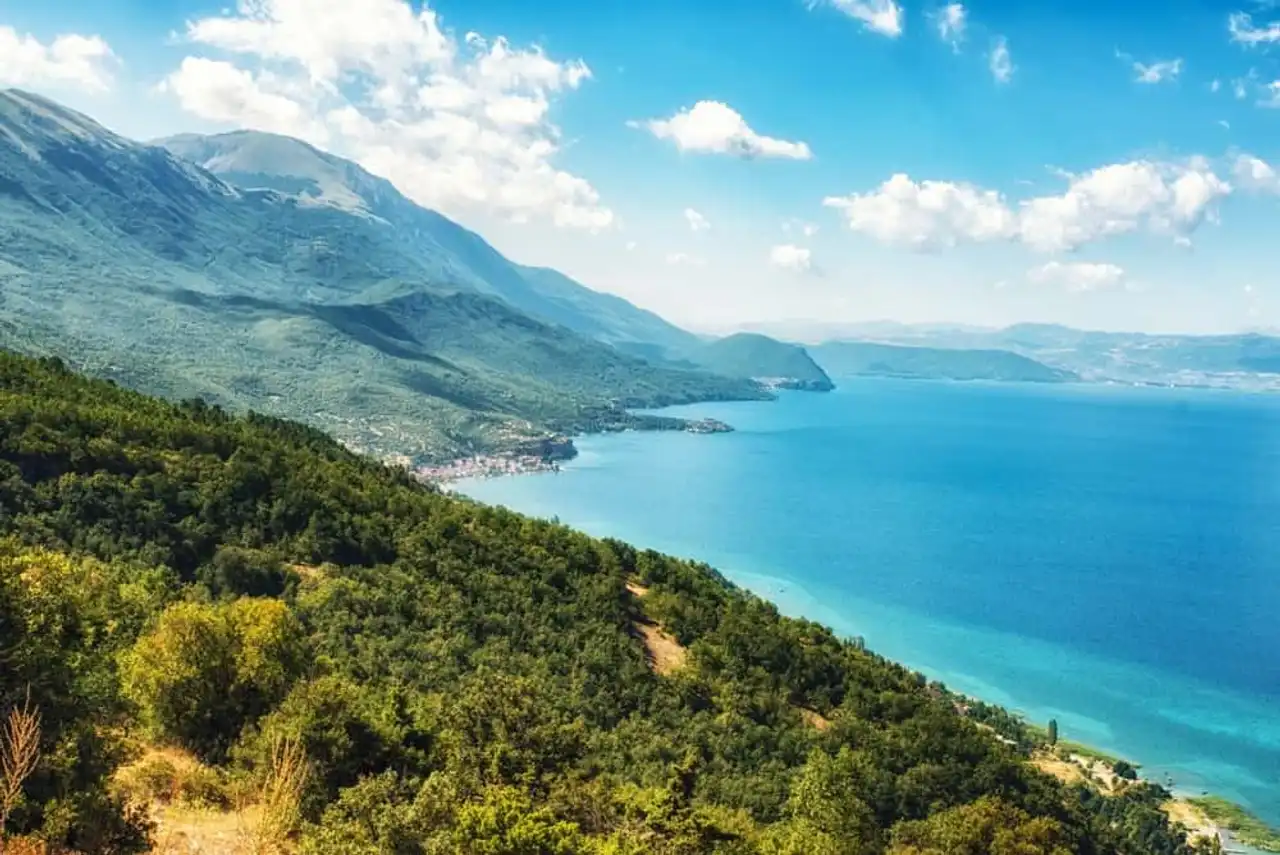
Panorama of the start of the Galitchitsa National Park – Photo credit: Shutterstock – Atosan
Finally, if time allows, the city of Ohrid is also worth a look. Head to the old city, discover its paved streets and traditional houses. If the place is sometimes crowded with tourists, the atmosphere remains light.
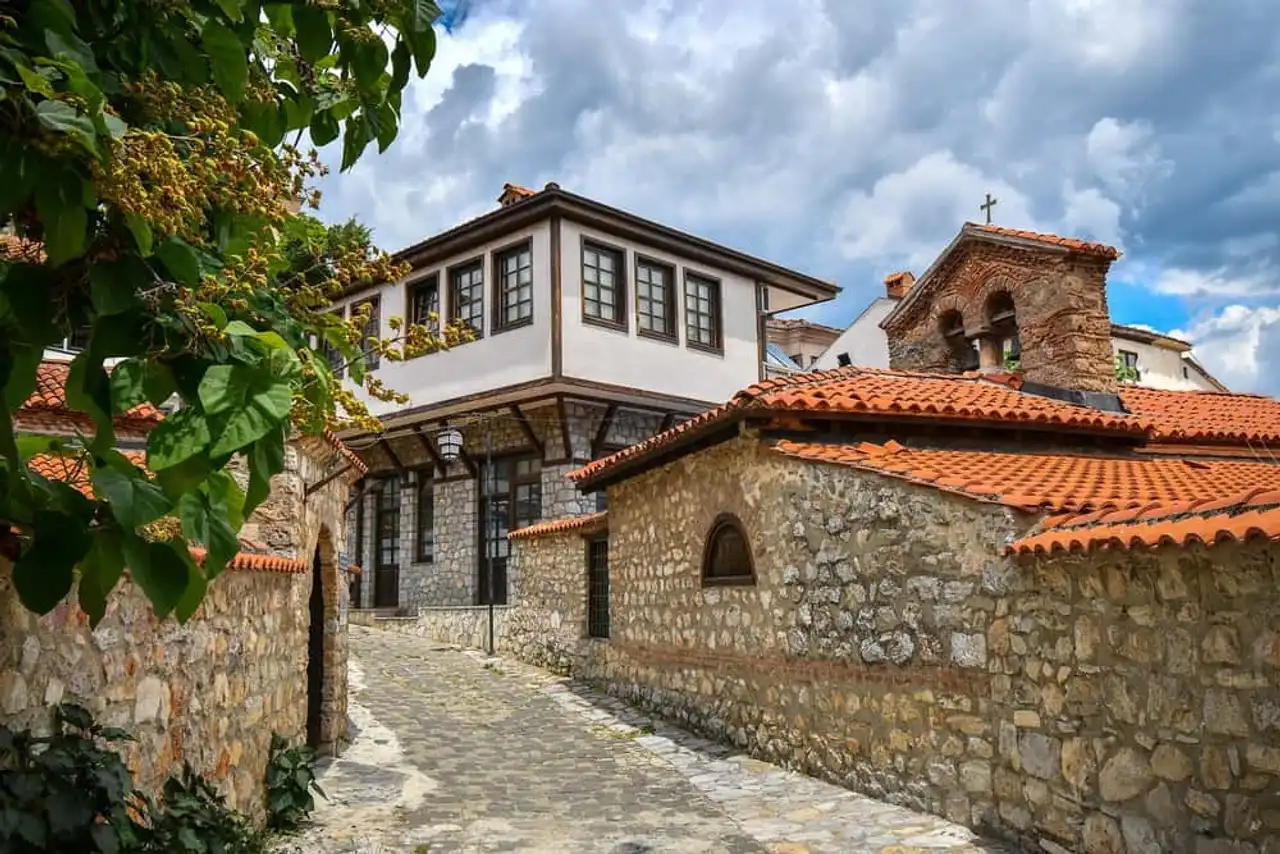
Typical of the old town, with its paved floor and traditional houses – Photo credit: Shutterstock – Filip Viranovski
Then once the old town is discovered, climb to the top of the town to discover the fortress of Samuel. She is named after her founder, Samuel I, Tsar of Bulgaria, who made Ohrid her capital in 969. A visit that allows you to admire perfectly preserved fortifications, but also to discover the history of the city.
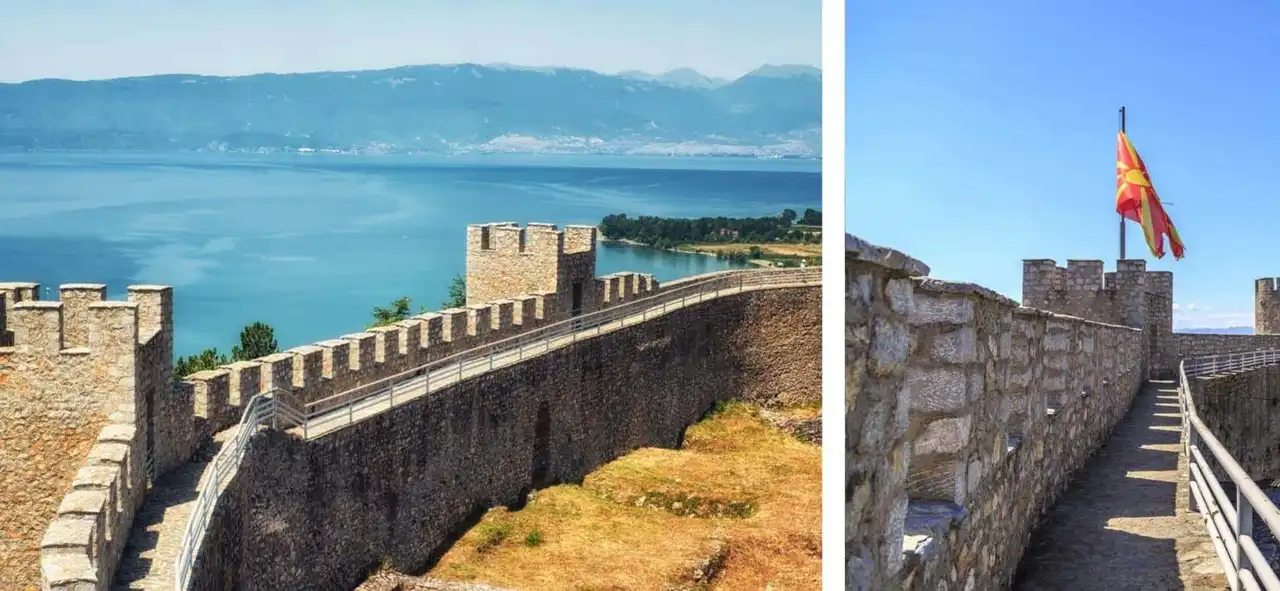
Find on the left: view on the lake from the fortress – Photo credits: Shutterstock – Atosan |MISUMI
So finishes your discovery of North Macedonia, a wonder of the Balkans, too often ignored. A country in diverse history, whose culture reflects its location, at the crossroads of two worlds.
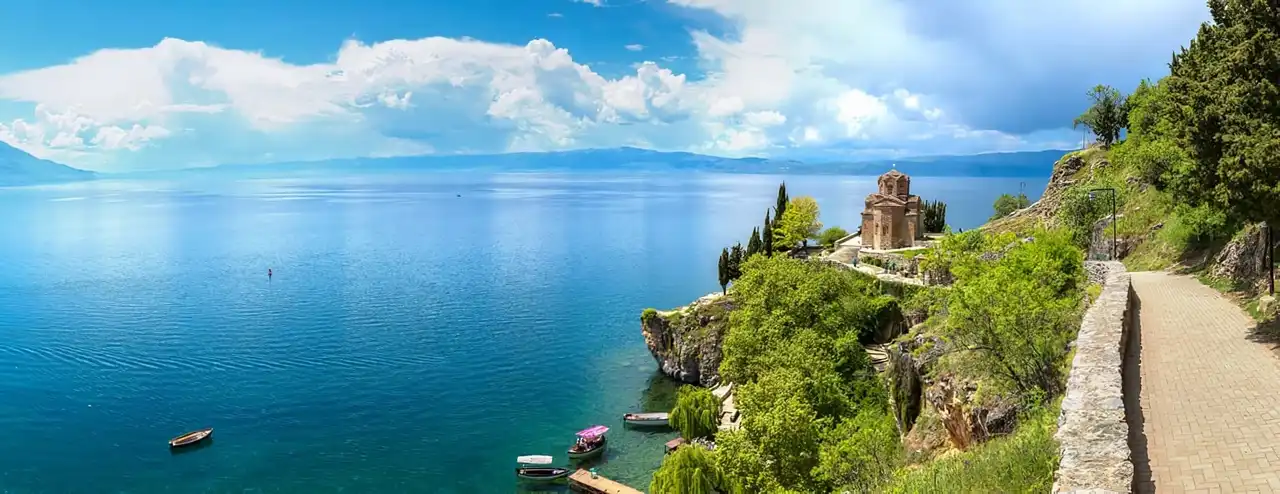




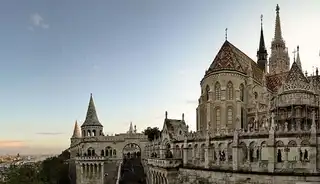


Loading comments ...